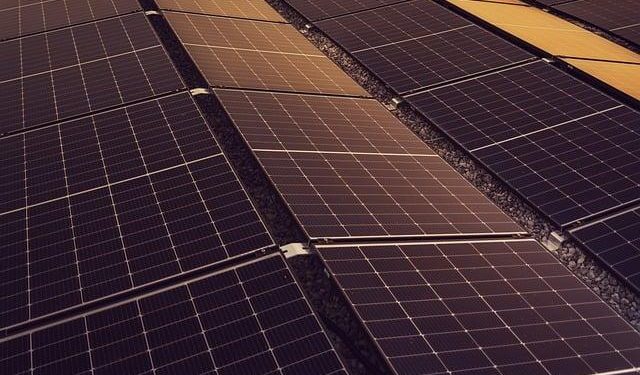In the ever-evolving landscape of renewable energy, solar power stands as a beacon of hope and innovation, illuminating pathways toward a sustainable future. At the heart of this transformative industry lies a strategic approach that is quietly reshaping the way solar energy companies operate: vertical integration. Imagine a symphony orchestra where each musician not only plays their instrument but also crafts it, writes the music, and conducts the performance. Vertical integration in solar energy is akin to this harmonious ensemble, enabling companies to streamline operations, reduce costs, and foster innovation from silicon to sunlight. This article delves into the intricate role of vertical integration, exploring how it empowers solar energy companies to harness the sun’s potential more efficiently and effectively, while navigating the challenges and opportunities of a rapidly changing energy landscape.
Harnessing Synergy: The Strategic Advantages of Vertical Integration in Solar Energy
In the dynamic landscape of solar energy, vertical integration emerges as a game-changing strategy, offering companies a multitude of benefits that extend far beyond mere cost savings. By controlling every stage of the supply chain—from the production of raw materials to the installation and maintenance of solar panels—companies can achieve unprecedented levels of efficiency and quality control. This holistic approach not only reduces dependency on external suppliers but also mitigates risks associated with fluctuating market conditions. Vertical integration empowers solar energy companies to innovate faster, adapt to changes seamlessly, and deliver superior products and services to their customers.
Moreover, the strategic advantages are not limited to operational efficiency. Vertical integration fosters a culture of collaboration and innovation, as teams across different stages of the supply chain work closely together, sharing insights and driving advancements. Companies can also leverage economies of scale, optimizing resource allocation and reducing costs, which can be passed on to consumers. Some of the key benefits include:
- Enhanced Quality Control: Ensuring that every component meets high standards.
- Streamlined Operations: Reducing lead times and increasing responsiveness to market demands.
- Greater Flexibility: Adapting quickly to technological advancements and regulatory changes.
- Increased Market Competitiveness: Offering more competitive pricing and innovative solutions.
Navigating Challenges: Overcoming Hurdles in the Integrated Solar Supply Chain
Vertical integration plays a pivotal role in smoothing the complex landscape of solar energy supply chains. By integrating various stages of production and distribution, companies can effectively mitigate risks associated with market fluctuations and resource availability. This integration allows for better control over supply and demand, which is crucial in an industry often disrupted by geopolitical tensions and regulatory changes. Furthermore, it enables firms to streamline operations, reducing lead times and lowering costs, which ultimately benefits the end consumer.
- Enhanced control over raw materials and production processes
- Reduced dependency on third-party suppliers
- Improved adaptability to market and regulatory shifts
- Streamlined logistics and inventory management
With these advantages, vertically integrated solar companies are better positioned to navigate the inherent challenges of their industry. By managing everything from silicon wafer production to panel installation, they can offer more competitive pricing and ensure higher quality standards. This comprehensive approach not only secures a more stable supply chain but also fosters innovation by encouraging continuous improvement across all levels of production and distribution.

Empowering Innovation: How Vertical Integration Drives Technological Advancements
Vertical integration has emerged as a pivotal strategy for solar energy companies aiming to accelerate technological advancements and streamline operations. By consolidating the supply chain, these companies gain unprecedented control over every aspect of production, from raw material procurement to the delivery of final products. This holistic approach not only enhances efficiency but also fosters innovation by allowing companies to swiftly adapt to new technologies and market demands.
Key benefits of vertical integration in the solar sector include:
- Cost Efficiency: By eliminating intermediaries, companies can significantly reduce costs and allocate more resources towards research and development.
- Quality Control: Direct oversight at each stage of production ensures higher quality standards and minimizes defects.
- Agility and Flexibility: Integrated operations allow for rapid adjustments in response to technological breakthroughs or regulatory changes.
- Intellectual Property Protection: Controlling the innovation process in-house safeguards proprietary technologies and innovations.
Ultimately, vertical integration positions solar energy companies to be at the forefront of the clean energy revolution, driving both sustainability and technological progress.

Future-Proofing Solar Ventures: Recommendations for Successful Vertical Integration
To ensure resilience and sustainability in the ever-evolving solar energy landscape, companies should embrace strategic vertical integration. This involves harmonizing different stages of the supply chain—from manufacturing photovoltaic cells to deploying end-user solar solutions. A seamless integration can result in reduced production costs, greater control over quality, and enhanced flexibility in response to market fluctuations. Additionally, vertical integration can streamline operations, thus minimizing dependency on external suppliers and mitigating risks associated with supply chain disruptions.
Companies considering this approach should focus on key strategies for success. These include:
- Investing in cutting-edge technology to maintain a competitive edge and foster innovation.
- Developing robust partnerships with key stakeholders to enhance collaboration and resource sharing.
- Implementing scalable solutions that can adapt to future growth and market demands.
- Fostering a culture of sustainability within the organization to align with global environmental goals.
By thoughtfully integrating these elements, solar ventures can not only future-proof their operations but also contribute significantly to the global shift towards renewable energy.
To Conclude
In the ever-evolving landscape of renewable energy, vertical integration emerges as a beacon of opportunity and challenge for solar energy companies. As these firms strive to harness the sun’s potential more efficiently, they weave a complex tapestry of innovation, strategy, and sustainability. Through the seamless integration of manufacturing, distribution, and installation, they aspire to illuminate the path toward a greener future.
Yet, as we have explored, the journey of vertical integration is not without its hurdles. It demands a delicate balance of resources, expertise, and foresight. The solar industry, much like the energy it seeks to capture, is in constant flux—pushing companies to adapt and innovate continually.
the is not just a strategic maneuver; it is a testament to the industry’s commitment to redefining how we power our world. As the sun sets on this exploration, one thing is clear: the pursuit of a sustainable future is as relentless as the sunrise, driving solar energy companies to reach ever higher, one integrated step at a time.

































